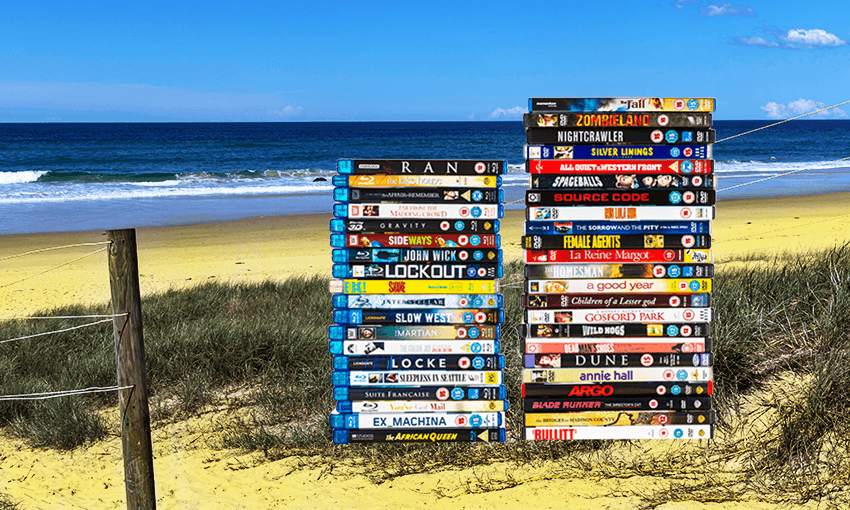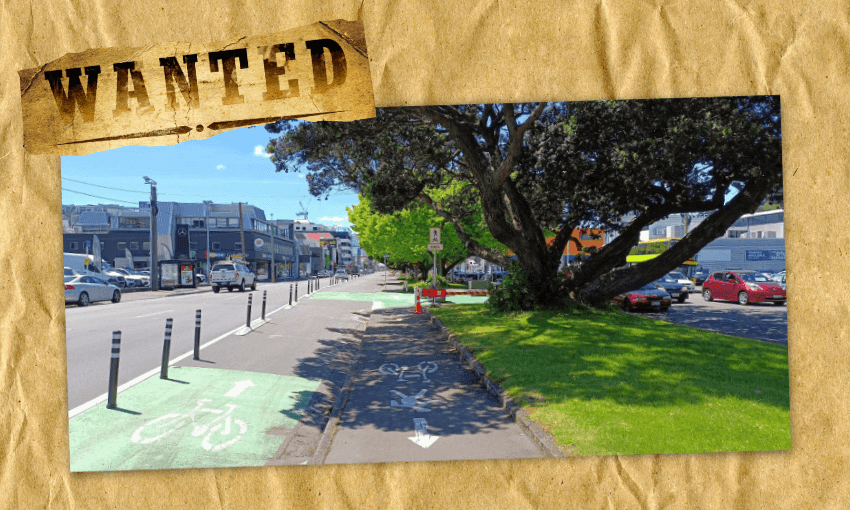REVIEW: For some of us, the longer we live in a house, the harder it is to contemplate a move. It’s as though we have become part of the fabric of the house. And what about those precious family memories? And all that hard work that’s gone into the property?
This week’s final episode of Moving Houses is a treat. Just when you would expect a retired couple to downsize, John and Sue of Hastings have turned that idea on its head. Their 1920s bungalow is massive, and they can’t imagine living in something smaller.
They’re moving out of town to the country, to live next door to family, and they are taking the house with them. But, fast-forwarding to the end of the story, when their house is stripped of all its furnishings, sliced in two, and plonked down on temporary posts in a field, it looks totally derelict. I wonder if they truly envisaged the amount of work ahead of them?
TVNZ 1
This house looked as pretty as a picture on its former site in Hastings, surrounded by beautiful established gardens. Now owners John and Sue have to start again, in a paddock.
Essentially, they have to start over. And that glorious garden Sue had nurtured over all those decades? Gone. They have dug out lots of plants to take with them, but in reality, it will be a huge job establishing a new one.
READ MORE:
* Moving Houses: Relocating 150-year-old vicarage requires 18-vehicle convoy
* Moving Houses: Couple rescue great-grandparents’ rundown mansion nobody wants
* Moving Houses: When you’re over motorhomes, you move a house instead
But I am jumping ahead. This story grabbed me from the start, partly because my own grandparents built a house in the same neighbourhood in Hastings in the late 1920s. My grandfather built it himself, and I had to look twice to see if it’s the same one. It has most of the same features, including the original wash house (it isn’t).
John and Sue moved into the sprawling four-bedroom house in 1976, and have brought up three children there. Interestingly, presenter Clarke Gayford says the house is getting harder for them to manage on their own. I can’t see that changing (same problem, new location?).
TVNZ 1/Stuff
With the gardens removed, and the house split in two, the property couldn’t look more different.
Screenshot
John and Sue watch their house get cut in two.
So they are moving to land next to daughter Penny and Sam’s place, where the grandchildren will be close. “The concept of building was getting more difficult and more expensive,” John says. “We thought, we’re not going to live in a tent, why not take the house?”
Sue says they really didn’t want to move to anything smaller. But she admits the biggest thing for her is leaving her established garden, which is quite magnificent. She says she will start over, hopefully with family help to get it going.
‘It’s your fault, Clarke”
Penny is already helping dig out the plants. She tells Gayford it’s all his fault – the couple got the idea of moving the house from watching this show. And she was all for it.
The move is a mere 11km, and they have had the land since 1978, when they paid a mere $70,000 for it.
TVNZ 1
Gayford gets an easy ride with this move, which takes just three hours.
TVNZ 1
The old house is prepped for the big move.
Gayford fears the process of dismantling the house and garden could be quite confronting after all those years. But they put on a brave face. Sue says she is “struggling” with the loss of the garden, because she will never have a garden like that again.
“The day the furniture was removed I came in, and I was quite upset,” she says.
And then the chainsaws start up. It must have been a hard watch for John and Sue, who says she can’t believe it can ever be joined up again.
But the blokes at Brittons know what they’re doing. There are huge pieces of house – the front truck has a height of 7m, and it’s incredibly long, so it won’t be straightforward. The neighbours come out to watch.
TVNZ 1
As well as being able to tilt the house, the truck trailers can move sideways to get around obstacles.
TVNZ 1
Two trucks manoeuvre the house into position.
A roundabout causes a few problems – the crew have to drop the road signs temporarily, and have trimmed some trees. It’s a tight fit. “Just politely brush it,” says one of the pilot vehicles. But some guttering comes off. In the meantime linesman are dropping lines temporarily, or propping them up. It’s all good teamwork.
The new trailer on the new truck can move sideways like a crab to get out of difficulties – it’s fascinating to see how these things work. The house pieces go up and down and are often on seemingly precarious angles. A 5cm clearance is considered huge.
At least Gayford gets a cruisy short run for the last episode in this series – and no all-nighters. It was only three hours.
TVNZ 1
This was how the house looked when it was first lowered into the paddock.
“I think the old lady will quite like it out here,” John says looking at house. “She’s 100 years, and she could be good for another 100.”
A couple of days later, Sue and John go through. “From the look on their faces it’s clear John and Sue have a few worries,” Gayford says.
“I’m a pessimist I think,” Sue says. “I can see all the negatives at the moment.”
So Gayford does a rave about the view, and they brighten up. Yes, the house is messy, but it’s sound.
TVNZ 1/Stuff
The house is temporarily propped up before it is settled down on the piles.
Grand reveal – 6 months later
It’s still a work in progress, but Sue and John are home. They have moved in and replaced the tired old brown kitchen with a spanking new modern white one, with a large island, and a new French door opening to a new sunny porch, built by son-in-law Sam. It’s beautiful.
Penny has also helped with much of the renovation, and she says it has been a real team effort.
In the other rooms, everything is back exactly where it was (the family insisted), including John’s hot air balloon collection. And all the collectibles. And the floorboards still creak in the same places.
TVNZ 1
From a distance you can just how big the house is. The volume at this end looks like an afterthought blocking the original veranda, on the sunny side of the house – perhaps this bit needs to go elsewhere.
There is a brand new bathroom too. And more French doors in the second lounge, so the house seems a lot lighter than before.
And what about the garden? Lots of things have been replanted, but there’s a lot of growing to go.
But the most important thing is they are right beside the family, and there is no way they will ever be lost for something to do in retirement.
This was a great show to end the series. And what a difference it makes for us to see a completed interior. It’s a good example of the way modern amenities and glass doors to the outside can completely transform a house. It seems much better suited to modern-day living.
All credit to John and Sue and the rest of the family. But it would have been interesting to know what it cost. A lot less than a new build, for sure. And their Hastings site would have big enough for a developer to snap up.





















Discussion about this post